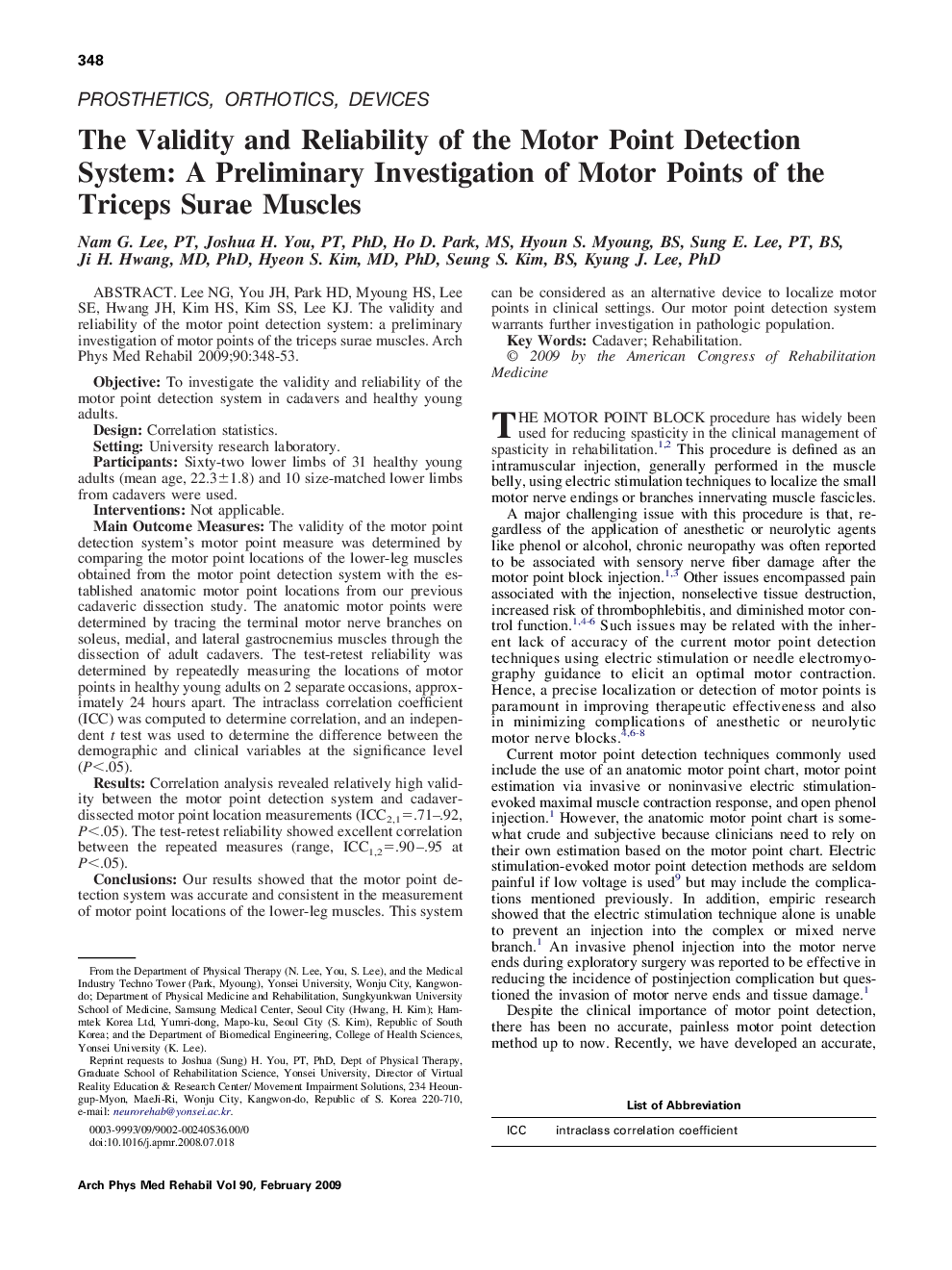| Article ID | Journal | Published Year | Pages | File Type |
|---|---|---|---|---|
| 3451126 | Archives of Physical Medicine and Rehabilitation | 2009 | 6 Pages |
Lee NG, You JH, Park HD, Myoung HS, Lee SE, Hwang JH, Kim HS, Kim SS, Lee KJ. The validity and reliability of the motor point detection system: a preliminary investigation of motor points of the triceps surae muscles.ObjectiveTo investigate the validity and reliability of the motor point detection system in cadavers and healthy young adults.DesignCorrelation statistics.SettingUniversity research laboratory.ParticipantsSixty-two lower limbs of 31 healthy young adults (mean age, 22.3±1.8) and 10 size-matched lower limbs from cadavers were used.InterventionsNot applicable.Main Outcome MeasuresThe validity of the motor point detection system's motor point measure was determined by comparing the motor point locations of the lower-leg muscles obtained from the motor point detection system with the established anatomic motor point locations from our previous cadaveric dissection study. The anatomic motor points were determined by tracing the terminal motor nerve branches on soleus, medial, and lateral gastrocnemius muscles through the dissection of adult cadavers. The test-retest reliability was determined by repeatedly measuring the locations of motor points in healthy young adults on 2 separate occasions, approximately 24 hours apart. The intraclass correlation coefficient (ICC) was computed to determine correlation, and an independent t test was used to determine the difference between the demographic and clinical variables at the significance level (P<.05).ResultsCorrelation analysis revealed relatively high validity between the motor point detection system and cadaver-dissected motor point location measurements (ICC2,1=.71–.92, P<.05). The test-retest reliability showed excellent correlation between the repeated measures (range, ICC1,2=.90–.95 at P<.05).ConclusionsOur results showed that the motor point detection system was accurate and consistent in the measurement of motor point locations of the lower-leg muscles. This system can be considered as an alternative device to localize motor points in clinical settings. Our motor point detection system warrants further investigation in pathologic population.
